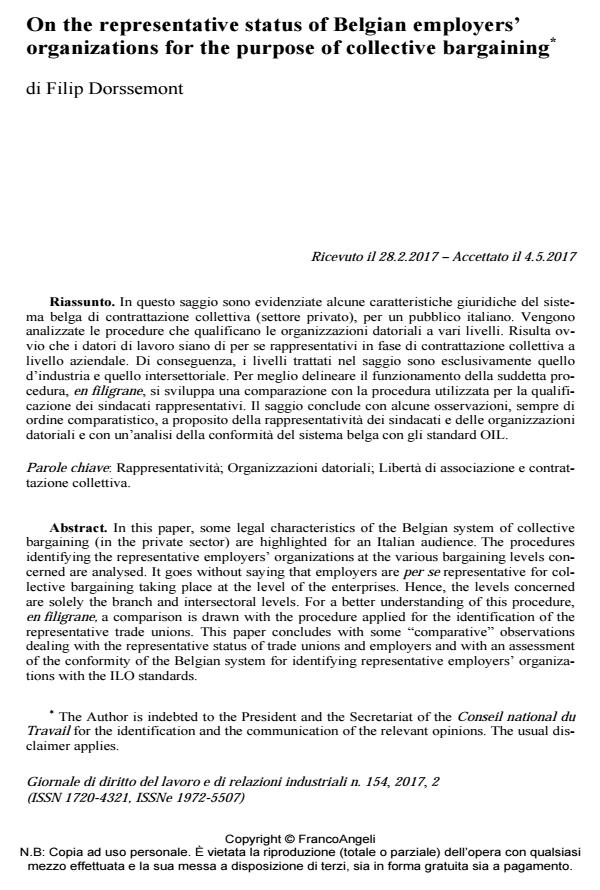On the representative status of Belgian employers’ organizations for the purpose of collective bargaining
Journal title GIORNALE DI DIRITTO DEL LAVORO E DI RELAZIONI INDUSTRIALI
Author/s Filip Dorssemont
Publishing Year 2017 Issue 2017/154
Language English Pages 11 P. 253-263 File size 170 KB
DOI 10.3280/GDL2017-154003
DOI is like a bar code for intellectual property: to have more infomation
click here
Below, you can see the article first page
If you want to buy this article in PDF format, you can do it, following the instructions to buy download credits

FrancoAngeli is member of Publishers International Linking Association, Inc (PILA), a not-for-profit association which run the CrossRef service enabling links to and from online scholarly content.
In this paper, some legal characteristics of the Belgian system of collective bargaining (in the private sector) are highlighted for an Italian audience. The procedures identifying the representative employers’ organizations at the various bargaining levels concerned are analysed. It goes without saying that employers are per se representative for collective bargaining taking place at the level of the enterprises. Hence, the levels concerned are solely the branch and intersectoral levels. For a better understanding of this procedure, en filigrane, a comparison is drawn with the procedure applied for the identification of the representative trade unions. This paper concludes with some "comparative" observations dealing with the representative status of trade unions and employers and with an assessment of the conformity of the Belgian system for identifying representative employers’ organizations with the ILO standards.
Keywords: Representativity; Employers organisations; Freedom of association and collective bargaining.
- I perimetri contrattuali e la rappresentatività datoriale Donata Gottardi, in GIORNALE DI DIRITTO DEL LAVORO E DI RELAZIONI INDUSTRIALI 172/2022 pp.627
DOI: 10.3280/GDL2021-172009
Filip Dorssemont, On the representative status of Belgian employers’ organizations for the purpose of collective bargaining in "GIORNALE DI DIRITTO DEL LAVORO E DI RELAZIONI INDUSTRIALI " 154/2017, pp 253-263, DOI: 10.3280/GDL2017-154003